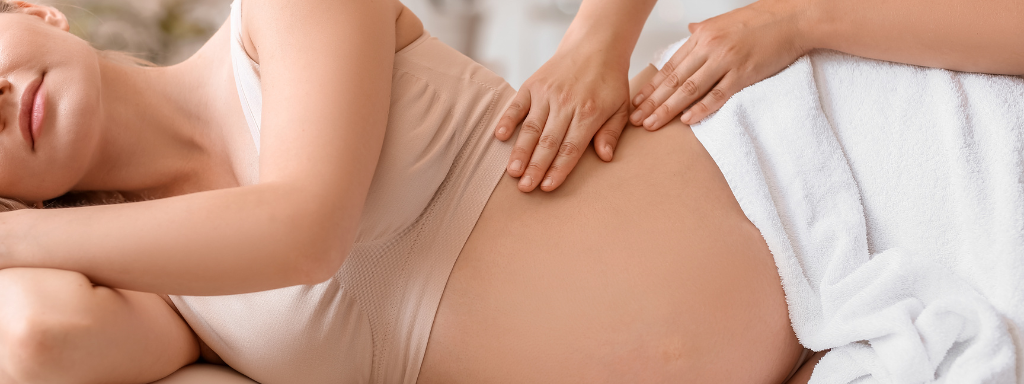
What is massage during pregnancy?
Massage during pregnancy is a proven way to relax the pregnant person and relieve the pain and physical discomfort associated with pregnancy. It is a gentle and enveloping treatment that combines different massage therapy techniques and manoeuvres (e.g. lymphatic drainage, stretching, mobilisation) and is adapted according to the stage of pregnancy.
A few words about the changes associated with pregnancy:
It goes without saying that the body undergoes many changes during pregnancy, some of which are associated with the appearance of discomfort or pain. For example, the increasing weight of the baby puts pressure on the back and legs of the person carrying the baby.
Other more subtle changes can also cause pain, especially in late pregnancy. These include the secretion of relaxin. This hormone, produced during the last weeks of gestation, acts on the cervix and surrounding muscle tissue to prepare the body for delivery. However, relaxin has a perverse effect, since it also acts on the joints, making them more mobile and therefore more fragile to injury. Thus, at the end of pregnancy, the body tends to compensate for the excess weight in the belly, which puts more strain on the joints and encourages the onset of pain.
What are the benefits of massage during pregnancy?
Massage is certainly an effective way to reduce stress and promote a state of well-being during pregnancy. However, the benefits of massage during pregnancy go beyond simple relaxation. Here are some of the benefits:
- Relief of muscle tension and stiffness
- Relief of back pain
- Improved posture
- Softening of the skin, which can help reduce the appearance of stretch marks
- Improved quality of sleep and breathing
Contraindications
Massage during pregnancy is considered safe if it is normal and uncomplicated, and if it is performed by a well-trained and competent massage therapist. However, this type of massage should be avoided if the person has any of the following conditions
- Fever
- Active infection
- Recent thrombosis or stroke
In the case of a high-risk pregnancy, for example if the person has gestational diabetes or pre-eclampsia, it is preferable to discuss the matter with the attending physician and obtain their agreement before seeking massage therapy.
It should be noted that the massage therapist always collects information from the client before beginning the treatment. This information will be used, among other things, to identify any contraindications to the massage. In doing so, the therapist will be able to direct the person to the appropriate medical resource or adjust the treatment accordingly to ensure safety.
Course of the session
Massage during pregnancy can be performed on a massage table or chair. Some massage therapists also have a massage table specially adapted for this type of treatment.
As with a regular massage, the massage therapist will begin the session by gathering information. To do this, the therapist will have the person fill out a health questionnaire to identify any contraindications to the massage.
The person will then be invited to sit on the massage table or chair. During the second and third trimesters of pregnancy, many people prefer to lie on their side, which is more comfortable and promotes better blood circulation. However, it is possible to lie on your back or stomach. Cushions and bolsters may also be used to keep the client comfortable throughout the treatment.
During the massage, the massage therapist will use gentle, enveloping manoeuvres to relieve muscle tension and relax the person. The massage therapist will work in particular on the neck, shoulders, back, legs and feet, as these areas are very much in demand during pregnancy. Drainage manoeuvres may also be applied to the legs when they are swollen.
The duration of a massage during pregnancy is approximately 60 minutes. This time may vary depending on the person’s needs, health condition or comfort.

